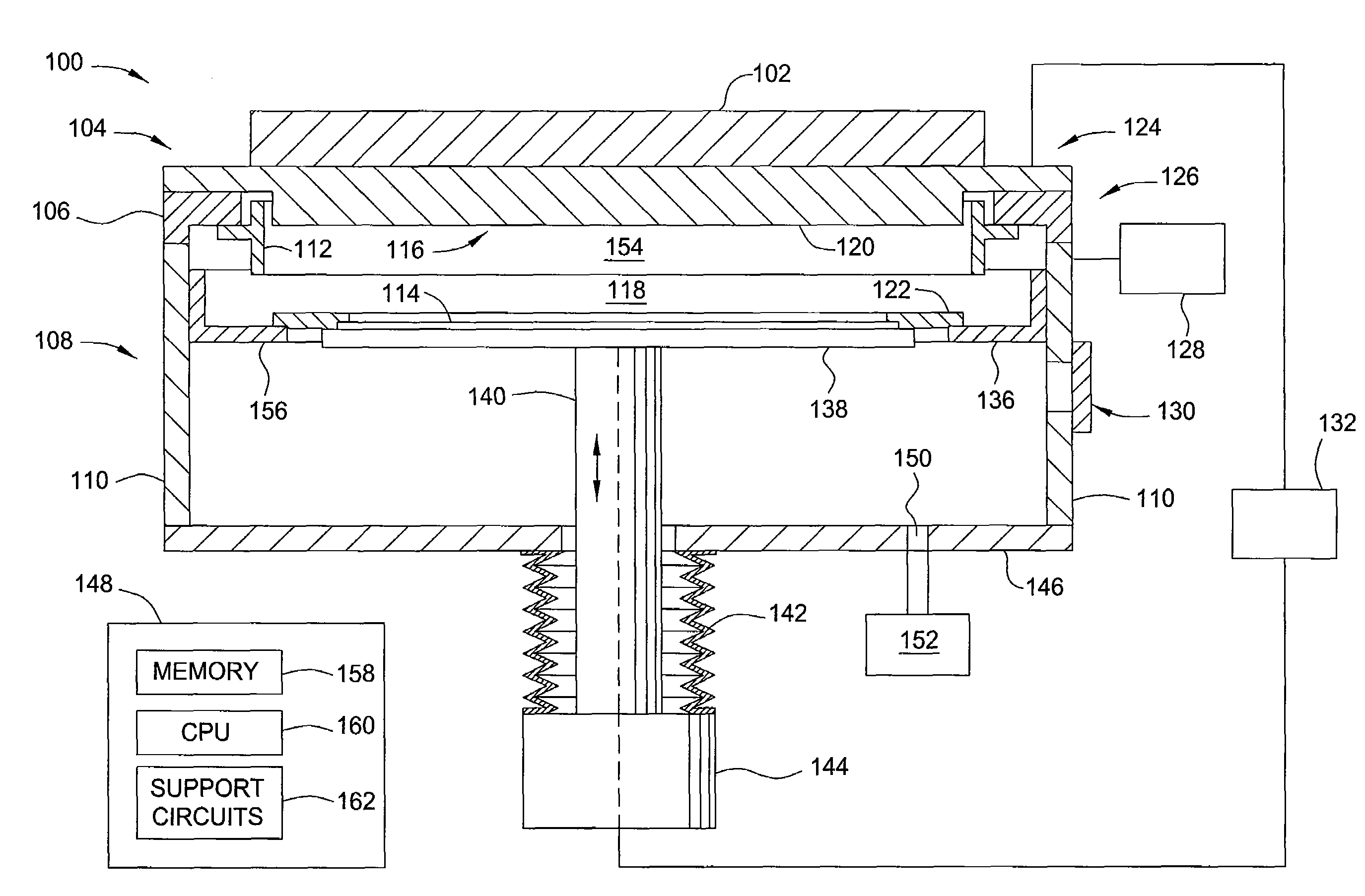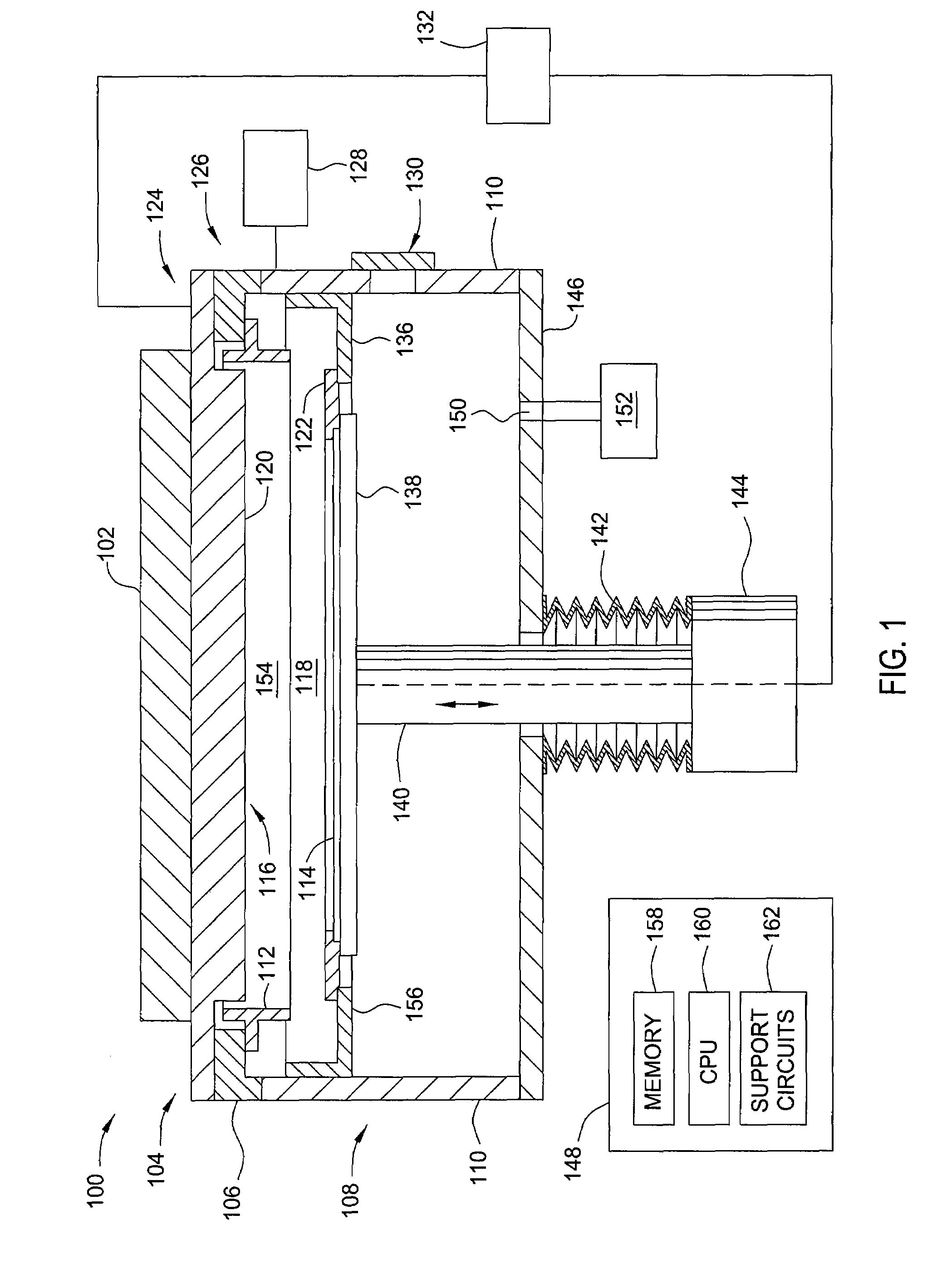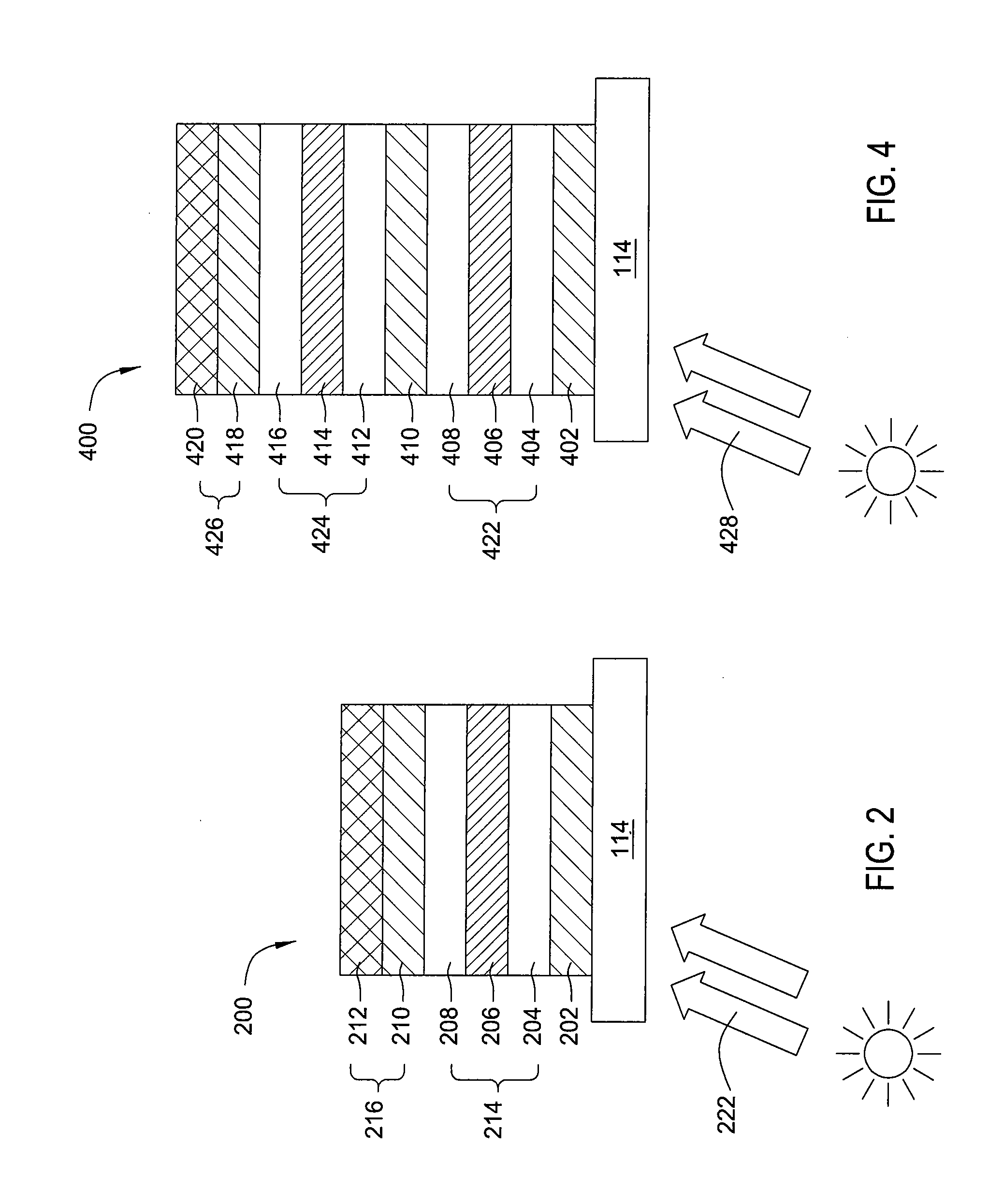Reactive sputter deposition of a transparent conductive film
- Summary
- Abstract
- Description
- Claims
- Application Information
AI Technical Summary
Benefits of technology
Problems solved by technology
Method used
Image
Examples
Embodiment Construction
[0018]The present invention provides methods for sputter depositing a TCO layer suitable for use in the fabrication of solar cells. In one embodiment, the TCO layer is sputter deposited by supplying different gas mixtures and / or different gas flow rates during sputtering, thereby tuning film properties to meet different and specific process requirements. In another embodiment, the TCO layer is sputter deposited as a back reflector in a solar cell unit by supplying different oxygen gas flow rate during sputtering, thereby tuning film properties to meet different and specific process requirements. In yet another embodiment, the TCO layer is sputter deposited as a back reflector in a solar cell unit by supplying different oxygen gas flow rate during a first and a second sputtering at a desired temperature, thereby tuning film properties to meet different and specific process requirements.
[0019]FIG. 1 illustrates an exemplary reactive sputter process chamber 100 suitable for sputter dep...
PUM
| Property | Measurement | Unit |
|---|---|---|
| Temperature | aaaaa | aaaaa |
| Temperature | aaaaa | aaaaa |
| Flow rate | aaaaa | aaaaa |
Abstract
Description
Claims
Application Information
 Login to View More
Login to View More - R&D
- Intellectual Property
- Life Sciences
- Materials
- Tech Scout
- Unparalleled Data Quality
- Higher Quality Content
- 60% Fewer Hallucinations
Browse by: Latest US Patents, China's latest patents, Technical Efficacy Thesaurus, Application Domain, Technology Topic, Popular Technical Reports.
© 2025 PatSnap. All rights reserved.Legal|Privacy policy|Modern Slavery Act Transparency Statement|Sitemap|About US| Contact US: help@patsnap.com



